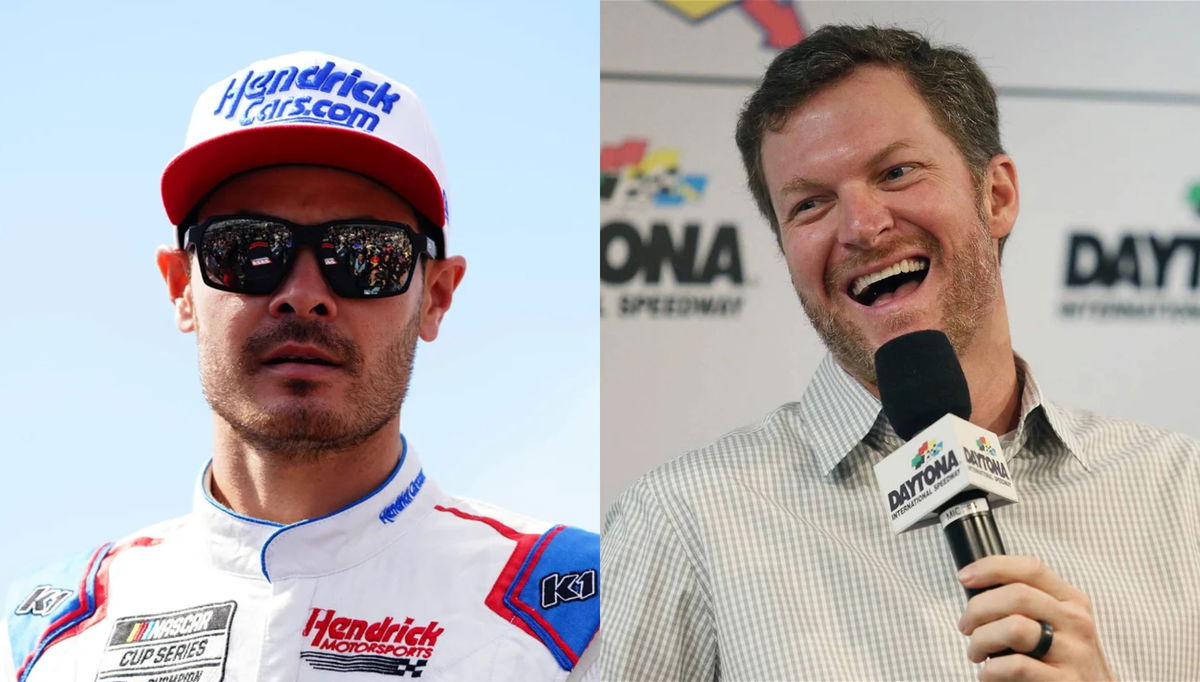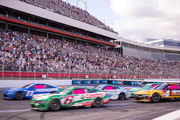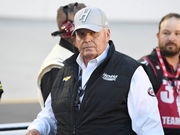
Imago
Image Credits: Imago

Imago
Image Credits: Imago
The economics of grassroots racing have shifted dramatically over the past two years. Kyle Larson and Brad Sweet’s High Limit Racing has exploded onto the sprint car scene. Over time, it has built a nationwide schedule of more than 50 races and offered over $5 million in prize money for 2024. In contrast, the CARS Tour, co-owned by Dale Earnhardt Jr., Kevin Harvick, Jeff Burton, and Justin Marks, remains a respected proving ground for late model racers but with a prize structure that rarely exceeds $10,000 to win. This imbalance has created a clear gap in how both series are viewed by competitors and investors. And Dale Earnhardt Jr. addressed this gap in a recent interview, admitting to being a tad bit envious.
Watch What’s Trending Now!
Dale Jr. has long been an advocate for short track and late model racing. He ensures that the CARS Tour maintains relevance among younger drivers while attracting loyal fanbases across the Southeast. But in recent months, the financial pressure has become more visible. Larson’s model, fueled by FloSports investment and a NASCAR-like charter system, contrasts sharply with the more traditional structure of the CARS Tour. As Dale Jr. watches High Limit’s rapid rise, his comments suggest a recognition that his series may need fresh approaches. In his comments, he revealed an openness to outside guidance that he has not often expressed before.
ADVERTISEMENT
Dale Earnhardt Jr. turns to “Yung Money” for monetary solutions
Speaking candidly in a recent interview, Dale Jr. admitted admiration for dirt racing promoters. He admitted that they are able to offer strong purses while keeping their business sustainable. “I mean, they’re doing it right,” he said, before wondering aloud, “I’d have to get behind the curtain a little bit to see like, what are they charging teams for pit passes, license, entry fee, right?” Dale Jr’s curiosity in knowing what Larson’s series is doing right reflects a deeper concern about why grassroots dirt racing can sustain big payouts.
Meanwhile, his own late model series struggles to reach similar financial stability. The comparison underscores the growing divide between the two forms of racing. High Limit has been pulling ahead thanks to aggressive investments and innovation. By taking solutions from Larson, he could revamp the CARS Tour’s structure, increase prize money, and attract more sponsors, helping it become a more competitive and financially sustainable series.
He went further, pointing out the impressive rewards available in dirt racing. “Their purses are really incredible, right? Wouldn’t you agree?” Dale Jr. asked. That single observation captures the challenge he faces. Drivers in High Limit can compete for $20,000 or more on weeknights, while CARS Tour events generally max out at $10,000. By openly framing dirt’s business model as something to learn from, Dale Jr. acknowledged that his series cannot compete financially without adopting new strategies. This admission highlighted a rare moment of humility. The undeniable success that High Limit has achieved has set a precedent for a new approach.
ADVERTISEMENT
The implications extend well beyond one series. For CARS Tour teams and drivers, the financial gap could limit growth opportunities unless new revenue streams emerge. Larson’s charter-style model offers teams security and potential profit sharing. However, Dale Jr.’s traditional approach leaves the burden mostly on promoters and local support. The tension between innovation and tradition now defines the future path of late model racing.
“We love the grassroots connection. We love the vibe and energy you get at a racetrack like @FmSpeedway2025 .”@DaleJr speaks on the growth & future of the @CARSTour everything from the prize money, schedule & #NASCAR @RaceFairgrounds
— Racing America (@RacingAmerica) August 30, 2025
ADVERTISEMENT
Looking forward, the CARS Tour will need to expand prize funds. They will look to secure stronger broadcast partnerships, and perhaps even explore franchise-style systems if they want to stay competitive with sprint car racing’s booming business model. Whether Dale Jr. can adapt those lessons from Kyle Larson into the late model space will determine the role of the series in developing the next generation of NASCAR talent.
Top Stories
New Charter Deal Triggers ‘Financial Frenzy’ as NASCAR Teams Set for Massive Payday

Rick Hendrick Strikes Fear in NASCAR Fans With Chevy’s New “Illegal” Car

Major Blow to Trackhouse Racing as Team Penske Steals Veteran Crew Chief Back in Unexpected Move

Chevy Team to Enter Kyle Larson’s Series as Michael Jordan Ends NASCAR’s Monopoly

Martin Truex Jr’s Former Crew Chief Ends 12-Year Fight In Huge Personal Announcement

Dale Jr. delivers at Florence stop at CARS tour
Dale Earnhardt Jr’s latest venture into grassroots racing has everyone watching. It continues to spotlight both his passion and the challenges of sustaining a regional tour. Competing at Florence Motor Speedway in the CARS Tour, Dale Jr strapped into the No. 3 Sun Drop Late Model. This drew excitement from fans eager to see the NASCAR Hall of Famer return to his short track roots. While the business side of running the CARS Tour remains his bigger concern, the former Cup champion still commands attention wherever he races.
ADVERTISEMENT
On track, Earnhardt qualified mid-pack and battled his way through a competitive Florence field. Though not a headline result, his presence at Florence revealed his commitment to the series he co-owns. Earnhardt Jr. battled through a highly competitive field and ultimately finished 18th in the Late Model Stock Car feature. While not a standout finish, his drive showcased consistent pace in a field led by CARS regulars..
Even as Dale Jr. focused on his own race, the spotlight shifted to championship contenders Landen Lewis and Connor Hall. Lewis claimed his fourth win of the season after a fierce late-race battle with Hall. Hall, who entered Florence with a narrow four-point advantage, settled for second, shaking up the standings as the tour heads into its stretch run. Casey Kelley, Cody Kelley, and Ryan Glenski completed the top five.
Although his finish wasn’t headline-worthy, Earnhardt Jr.’s presence elevated the profile of the Florence event and underscored his commitment to the CARS Tour. As a series co-owner, his participation brought both star power and continued emphasis on its grassroots racing roots. For the season’s deciding chapters ahead, the focus now lies with Lewis, Hall, and the emerging talent they represent on every tough, tactical oval like Florence.
ADVERTISEMENT
ADVERTISEMENT
ADVERTISEMENT
ADVERTISEMENT

